
Painting: its types, styles, genres, techniques, and history of origin
Painting is a form of visual art that involves capturing the surrounding world with colors on a surface. The primary expressive tool of painting is color, which influences the overall perception of the artwork by the viewer, drawing attention to important details and enhancing the emotional aspect of the work. Shades and tones necessary for accurate representation of color, volume, and space are achieved by mixing paints on a palette.
 Painting. Gianni Strino. Artist
Painting. Gianni Strino. Artist
Types of Painting
The following main types of painting are distinguished:
Easel painting. The name comes from the word "easel," referring to the painting stand. True artists, accustomed to painting at all times and in all places, hardly ever part with this three- or four-legged "companion." By setting up a canvas on an easel, the artist not only has the opportunity to paint an interesting subject without distortion (as is the case when drawing while sitting at a table) but also to step away from the work from time to time to assess the result from a distance. This technique allows them to see the painting as a whole and quickly make corrections.
Mural painting. Inextricably linked to architecture, another name for it is "mural," meaning "wall painting." Murals decorate ceilings and walls of buildings. Usually, the subject of such a "canvas" emphasizes the purpose of the structure, forming a unified artistic and thematic concept with it. The fresco technique—painting on wet plaster—is often used.
There is also decorative painting, whose main purpose is ornamentation. It is characterized by clean, vibrant colors, meticulously crafted forms, and logical compositional structure. Distinctive features of this style include: distortion of perspective, alteration of proportions, absence of volume, presence of outlines and ornamental patterns. Decorative painting can be both easel and monumental.
 Painting. Oleg Davydov. Decorative Still Life
Painting. Oleg Davydov. Decorative Still Life
Main Painting Styles
Throughout the centuries of development in visual art, new styles of creating works emerged. Some styles existed only briefly and did not find support in society. Others became benchmarks that contemporary artists look to. Let's consider the main painting styles:
- Renaissance. The style originated in Italy in the 14th century. It focused on depicting the secular aspects of life. Artists celebrated the cult of the human body and showed interest in details. It became the basis for the Rococo style—a refined "version" of Baroque.
- Mannerism. Came from Italy in the 16th century. Excessive eroticism, angular lines, some deformation, elongated figures, compositional overload, acrid color palette, tension in poses, and more are characteristic of this style.
- Baroque. Emerged in the 16th century in Italy and spread to Spain, France, and Germany. Main features include lavishness, richness, and dynamism. Emphasis was placed on decorations and other elements that emphasized wealth and belonging to the affluent class.
- Classicism. A style that originated in the 17th century in Western European countries and spread to the East after a century. Paintings in the classical style are characterized by realistic, dogmatic reproduction. It was the precursor of academicism, which upheld the canons of visual art.
- Romanticism. Originated in Western Europe in the late 18th century. This style was characterized by focusing on the emotions and individualism of the characters in painted scenes, as well as glorifying the power and beauty of nature. In most countries, Romanticism reached its peak of development between 1800 and 1850.
- Impressionism. Came from France in the late 19th century. The essence of the style is to capture a moment with quick brushstrokes. Paintings in this style need to be viewed from a short distance to see how the bright patches of paint come together to form a cohesive image.
- Expressionism. Emerged in the early 20th century in Europe. Expressionism is considered a transformation of Impressionism, evolving from a simple description of reality into an expression of the artist's subjective state. Attempts to influence the viewer through emotions are conveyed through main techniques: bright and vivid colors, angular and distorted lines, rough and rapid brushstrokes.
- Avant-garde. Emerged as a distinct style in the early 20th century. Closely related to modernist movements, it involves the search for new forms and images, as well as the introduction of innovative concepts into painting through simplification of representation on canvas. The essence of avant-garde is non-conformity with traditions, classical understanding of painting, and the fight against stereotypes.
Genres of Painting
Depending on the subject, works of visual art are typically divided into the following genres of painting:
- Portrait. Depicting an individual or a group of people. The artist's task is to truthfully capture the appearance and inner world of the subject. Divided into individual, ceremonial, group, and self-portraits.
- Landscape. Depicting nature in its original or transformed state by humans, allowing for the presence of people but not making them the main protagonists of the scene. Emerged as a separate genre during the Renaissance.
- Marine. Emerged as an autonomous genre of landscape painting in the Netherlands in the early 17th century. It portrays maritime views and events, including naval battles and cruises.
- Historical. Formed as a separate genre during the height of the Renaissance. It includes depictions of real events from the present and the past that hold social significance for one nation or all of humanity, as well as religious, biblical, evangelistic, and mythological subjects.
- Battle. Originated in Italy during the Renaissance. Depicts scenes of naval and land battles, military campaigns, and military life. Characteristic features of the genre include attention to detail, realistic narrative, informativeness, and meaningfulness. Many battle works were painted by eyewitnesses of specific events.
- Animal Painting (sometimes called Animalism). The primary focus of this genre is wild and domestic animals, birds, and reptiles. One of the oldest directions in painting, with its final formation dated back to the 8th-13th centuries. The first depictions of animals appeared on the walls of ancient caves, and on canvases in Ancient China.
- Genre. Originated in ancient art but emerged as a distinct genre in the Middle Ages. This style is dedicated to depicting the private and public life of individuals, as well as everyday life and popular culture. Through the depiction of everyday life, artists strive to convey social issues to the viewer.
- Still Life. Established as a standalone genre in the 17th century in Western Europe. It depicts "inanimate nature." The foundation of this genre lies in lifeless objects: game, caught fish, fruits, vegetables, flower bouquets, and household items (tools or utensils).
- Architectural. The main theme is architectural landscapes, including not only urban views or standalone buildings but also interior spaces. Architecture was present in the works of Renaissance artists, but it fully formed as an autonomous genre in Dutch painting of the 16th-17th centuries.
- Genre of Nude. An artistic genre celebrating the aesthetics of the nude body, primarily female. The earliest drawings of naked individuals appeared in ancient Greece and Rome, but as a separate genre, nude painting emerged in the 17th century in Western Europe. Initially, the genre was confined to historical and mythological subjects, but over time, artists began to depict their own ideals of feminine beauty in such paintings.
Painting Techniques
Leonardo da Vinci once remarked, "Painting techniques are inexhaustible, as they encompass everything created by nature, time, and man." Experts distinguish dozens of painting techniques, and here are the main ones:
- Oil Painting. Highly valued by artists for the viscosity of the paints – they do not dry for several hours or even days, allowing for multiple changes to be made to the work. Oil paint is most commonly applied to a primed linen canvas, but other surfaces can also be used. The two most common subtypes are the layered technique, where the canvas is covered with layers of paint after the complete drying of the previous layer, and "alla prima" – creating a work "in one go." Oil paint can be used in the "impasto" technique, applying thick opaque brushstrokes with a palette knife, "glazing," creating many thin semi-transparent layers, and "dry brush."
- Acrylic Painting. At first glance, acrylic paints resemble oil paints, but they have different bases – water and vegetable oil, respectively. Acrylic paint dries significantly faster, in just 15-20 minutes, and is more elastic, which prevents cracks from forming in the finished work. The palette includes "unusual paints" – such as shimmering "metallics" and fluorescent colors.
- Watercolor Painting. Watercolor paints do not contain binders; instead, the paper underneath the image serves as the base. Watercolor allows for creating airy, semi-transparent paintings. It dries very quickly. Watercolors can be applied both to dry and wet surfaces.
- Tempera Painting. An ancient technique that has been regaining interest in recent years. Tempera paints are made from egg and dry quickly, barely mix on the surface, and slightly change color after drying. This is why they require a certain level of experience in handling.
- Gouache Painting. The material is dense and opaque, resulting in a matte and velvety surface for the painting. Gouache is applied to paper, canvas, fabric; it dries within a few hours, making it easy to make corrections to the work.
- Ink Painting. Ink is made from soot, resulting in a two-color, black and white painting. The main advantages of ink include its resistance to smudging and alcohol, allowing certain areas to be degreased before applying the image.
- Pastel Painting. Works are created on dry paper using special pencils – dry, oil-based, or pastel pencils. The process involves blending the pigment, embedding it into the surface, and applying multiple layers. Some experts consider the last three techniques to be more closely related to graphic art than painting.
- Encaustic Painting. Paintings (mainly icons) are created using colors based on wax. They are applied in a molten state, using a fine brush or a metal tool.
- Airbrushing. Liquid or powdered paint is sprayed onto the surface using a specialized device, an airbrush, or an aerosol can. This method allows for creating various effects, realistic three-dimensional images, and imitation of textured surfaces.
- Mixed Media. The use of multiple materials in one work.
History of the Emergence and Development of Painting
The history of painting begins from the moment when humans first depicted something on a surface using paint. According to scientific data, this happened 40,000 to 12,000 years ago, during the late Paleolithic period. This is evidenced by the preserved rock paintings in caves in the territories of Southern France, Northern Spain, and other countries.
 Painting. The first cave paintings
Painting. The first cave paintings
Drawings were created using earth pigments, the colors of which varied depending on the impurities in the soil. For example, natural yellow pigment ochre was found where there was a high iron content. Oxidized metal gave the soil a characteristic rusty shade. Brown, brownish, and greenish paint known as umber was found in soils rich in manganese oxides. Wood charcoal and soot were also used.
The coloring pigment was applied to cave walls using pieces of fur, split sticks, and fingers. Images of animals, and later, hunting scenes, were expressive and truthful, despite the lack of compositional principles. The first depictions of human figures appeared between the 8th and 4th centuries BC. The color palette became broader thanks to the introduction of pigments obtained by grinding colorful minerals (lapis lazuli, cinnabar) into powder. During the Neolithic period, casein, albumen, gum resins, and other binders emerged. Mixing them with various colored ground stone created paints of different consistencies.
 Painting. Painting in an ancient Egyptian tomb
Painting. Painting in an ancient Egyptian tomb
In the ancient period, "rock" painting had already reached a higher level. Often associated with funerary cults, it had a narrative character. A compositional development emerged: the proportion and arrangement of human figures indicated the hierarchy from lord to servant; everyday and battle scenes depicted the vicissitudes of life during that era.
From Antiquity to the Present Day
The art of depicting light and shadow belongs to the ancient Greeks, who advanced significantly in the direction of realistic painting. However, the popularity of voluminous and sensuous monumental works quickly faded, giving way to vase painting. On the other hand, this new technique was favored by the Romans, who had a passion for interior decoration. High artistic wall paintings show the use of aerial and linear perspective.
 Painting. Hades and Persephone (ancient Greek fresco), 340 BC
Painting. Hades and Persephone (ancient Greek fresco), 340 BC
Painting in the Middle Ages took on a religious character. Artists no longer sought to portray reality on canvases. The conveyance of spirituality became important. Even if a work was not an icon, it was still devoid of volume and perspective. Characters were positioned on a single line and appeared flat and primitive.
Everything changed with the advent of the Renaissance. Artists, attuned to societal moods, tried to anticipate fashionable trends in painting and follow them. Landscape and portraiture became independent genres. New techniques emerged. Everything looked dignified and noble until the 17th and 18th centuries when the Catholic Church lost its former significance and power. Painters, no longer fearing the Inquisition, began to create truthful paintings depicting the true likeness of people of that era and their everyday lives.
 Painting. Andrea Solario. Cleopatra, 16th century
Painting. Andrea Solario. Cleopatra, 16th century
In the same period, new styles emerged: Rococo, Baroque, Mannerism, Classicism. Romanticism also appeared, soon replaced by the more striking and ambiguous Impressionism. The history of painting underwent radical changes in the early 20th century. Abstractionism emerged as a movement aimed at conveying the artist's emotions to the viewer, the state of their soul at the moment of creating the canvas.
 Painting. Jean-Baptiste Simeon. Laundress, circa 1735
Painting. Jean-Baptiste Simeon. Laundress, circa 1735
There is no longer a need to adhere to canons. Artists strive for self-expression. Their imagination gives rise to new styles and directions, branches. Despite this, even in the present 21st century, the love for classical painting remains strong.


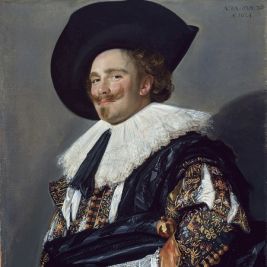 Portrait - a genre of painting: essence, types, history of the genre, famous portraits and portrait artists
Portrait - a genre of painting: essence, types, history of the genre, famous portraits and portrait artists 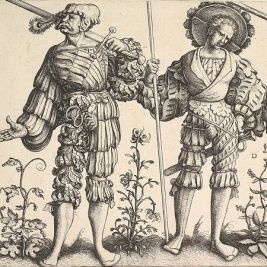 Etching is a type of engraving and printing technique
Etching is a type of engraving and printing technique 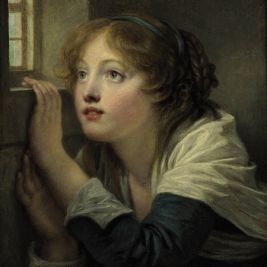 Sentimentalism in Painting: Heartfelt Emotions and Sensitive Subjects
Sentimentalism in Painting: Heartfelt Emotions and Sensitive Subjects 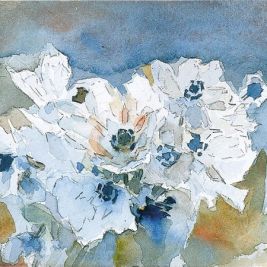 Watercolor - the airy lightness of the rainbow: types, techniques, history
Watercolor - the airy lightness of the rainbow: types, techniques, history 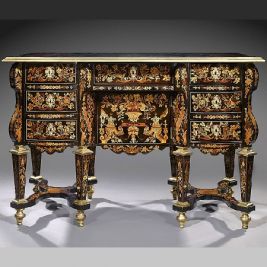 Marquetry is the elegant ancient art of inlaying veneer
Marquetry is the elegant ancient art of inlaying veneer 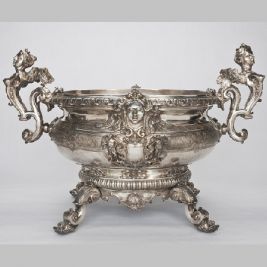 English Silver Tableware - History, Fashion, and Styles
English Silver Tableware - History, Fashion, and Styles 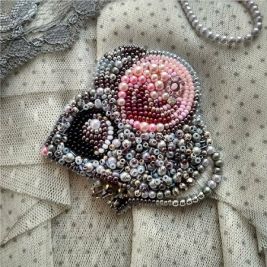 Application is a technique of decorative and applied art: essence, types, history
Application is a technique of decorative and applied art: essence, types, history 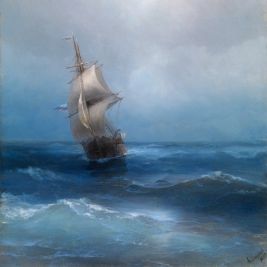 Ecole de Paris and other masters online auction on drouot.com, until 5 dec 2023
Ecole de Paris and other masters online auction on drouot.com, until 5 dec 2023 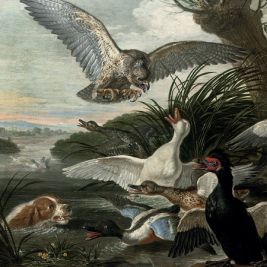 Animalism is a popular genre in painting from prehistoric times
Animalism is a popular genre in painting from prehistoric times 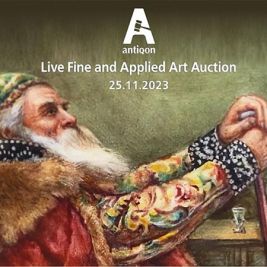 Live Fine and Applied Аrt Auction No.8 of the Antiqon trading platform
Live Fine and Applied Аrt Auction No.8 of the Antiqon trading platform